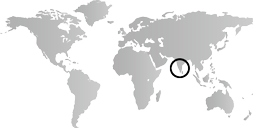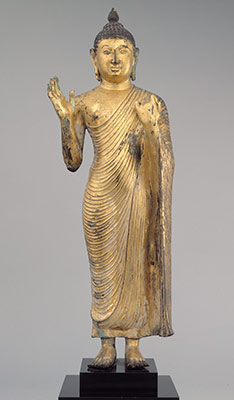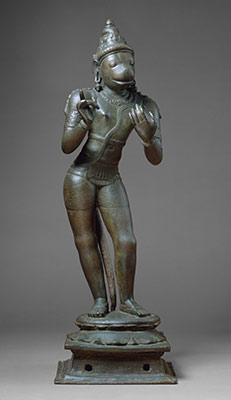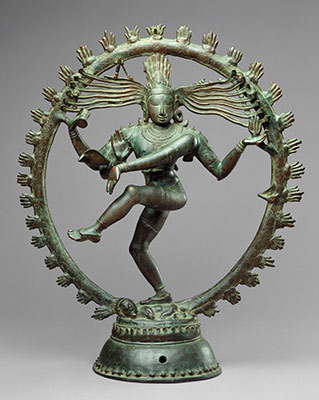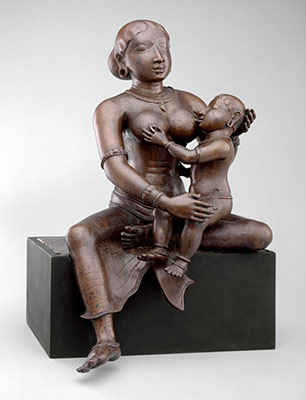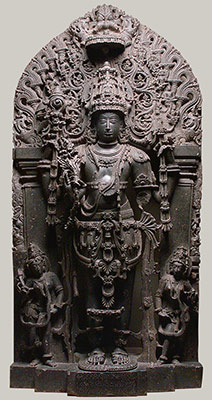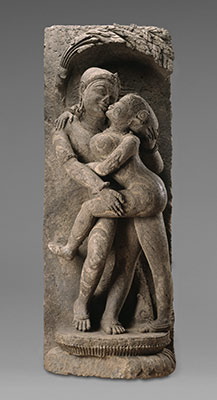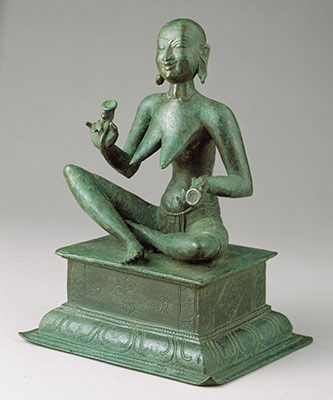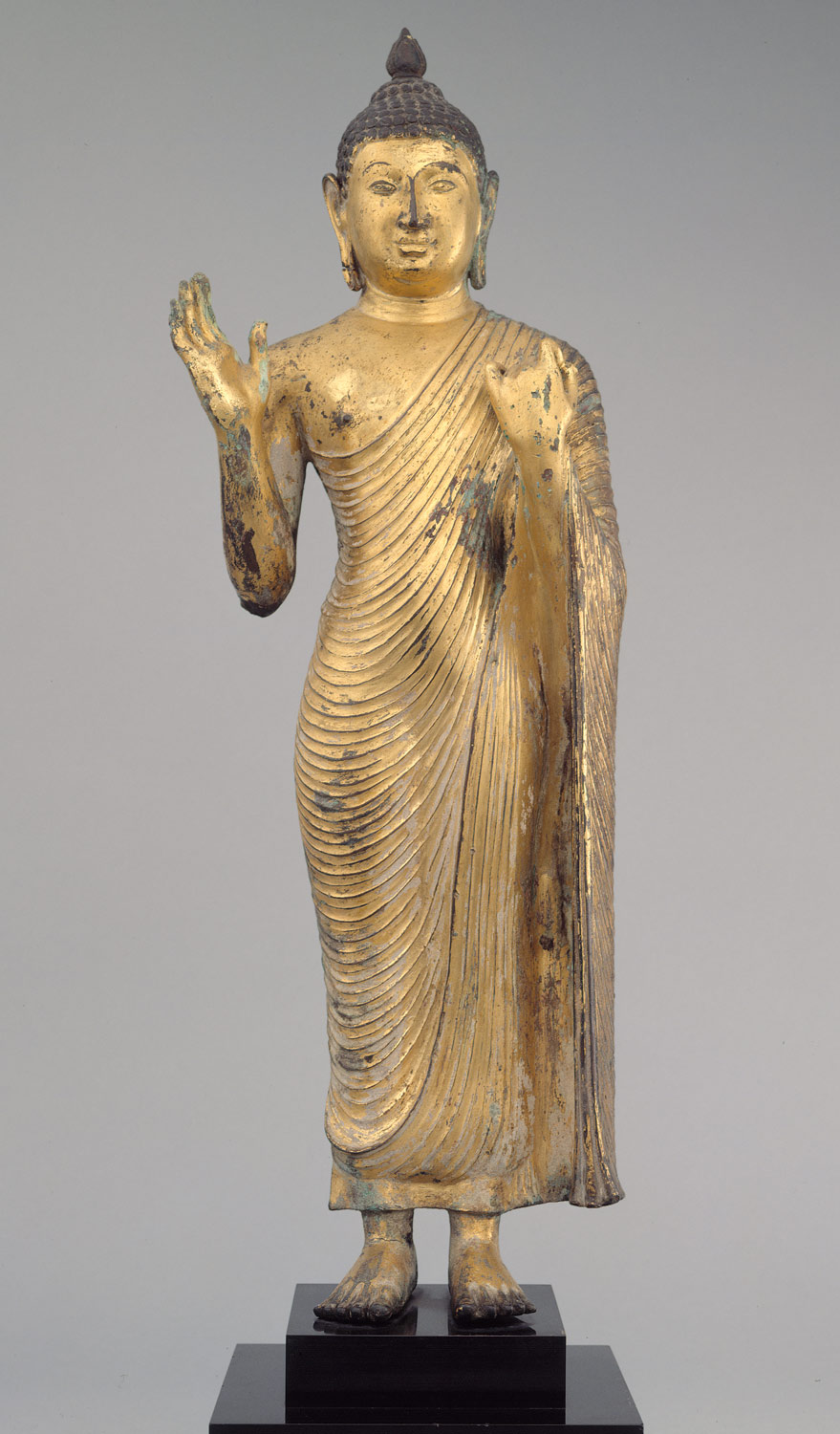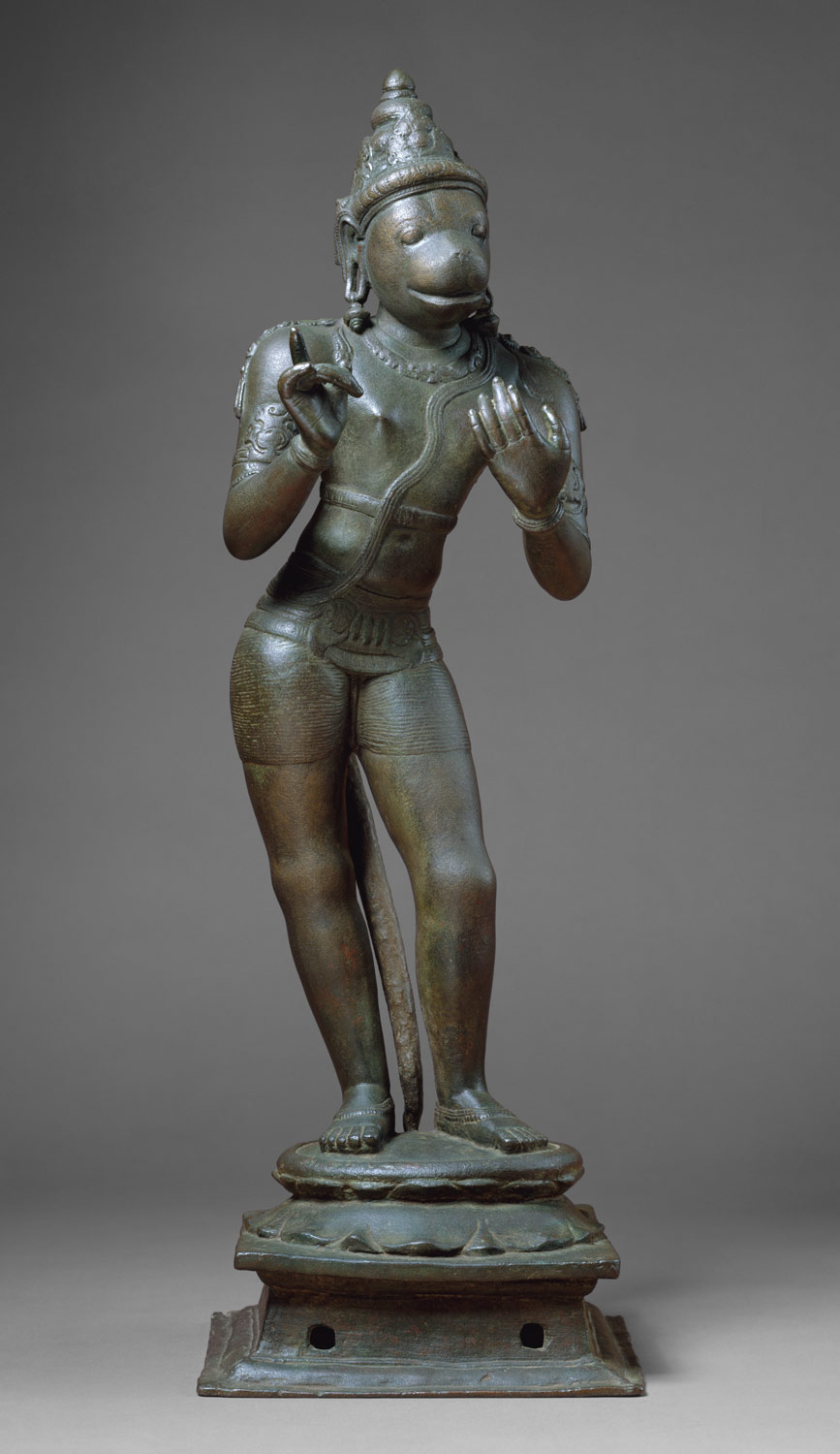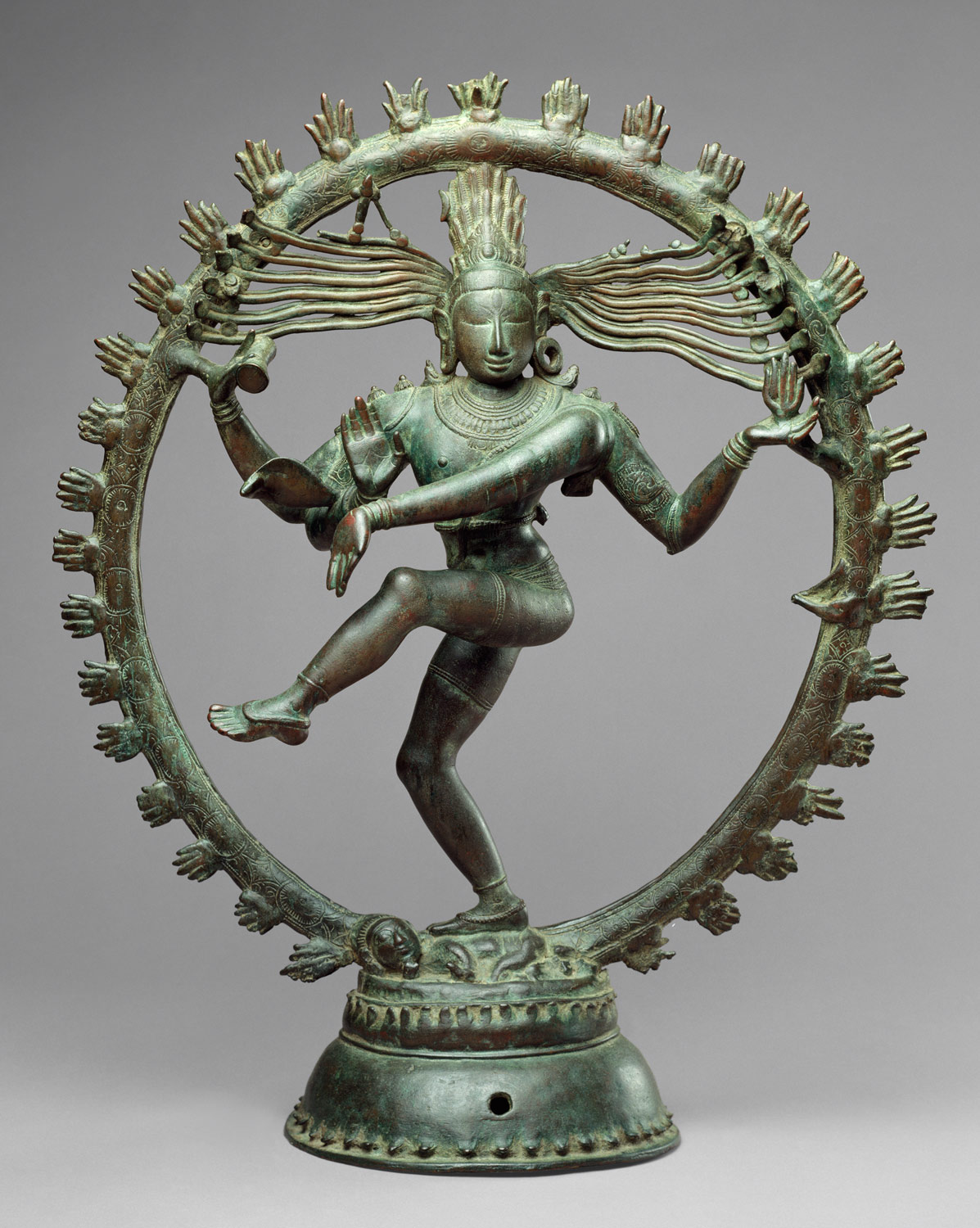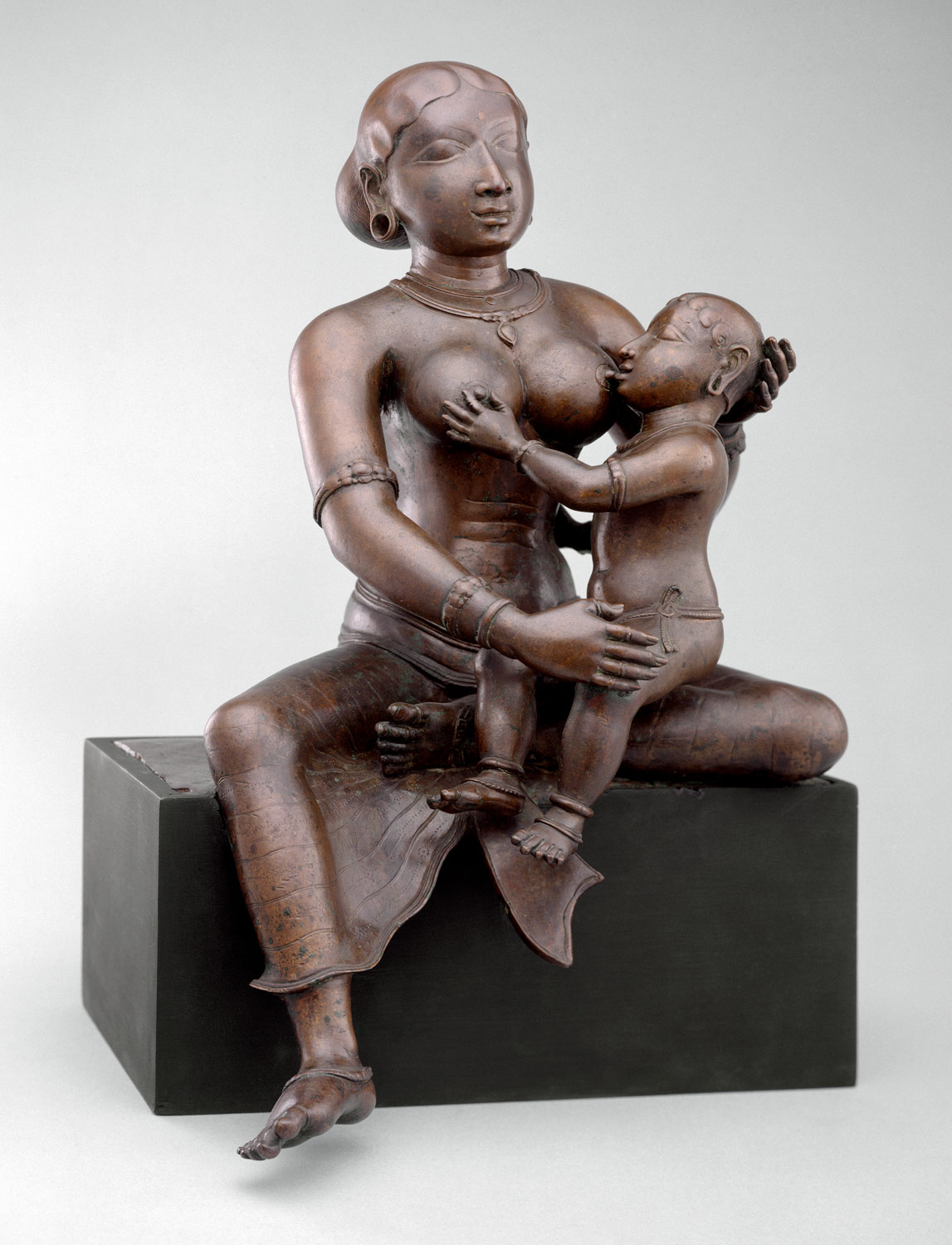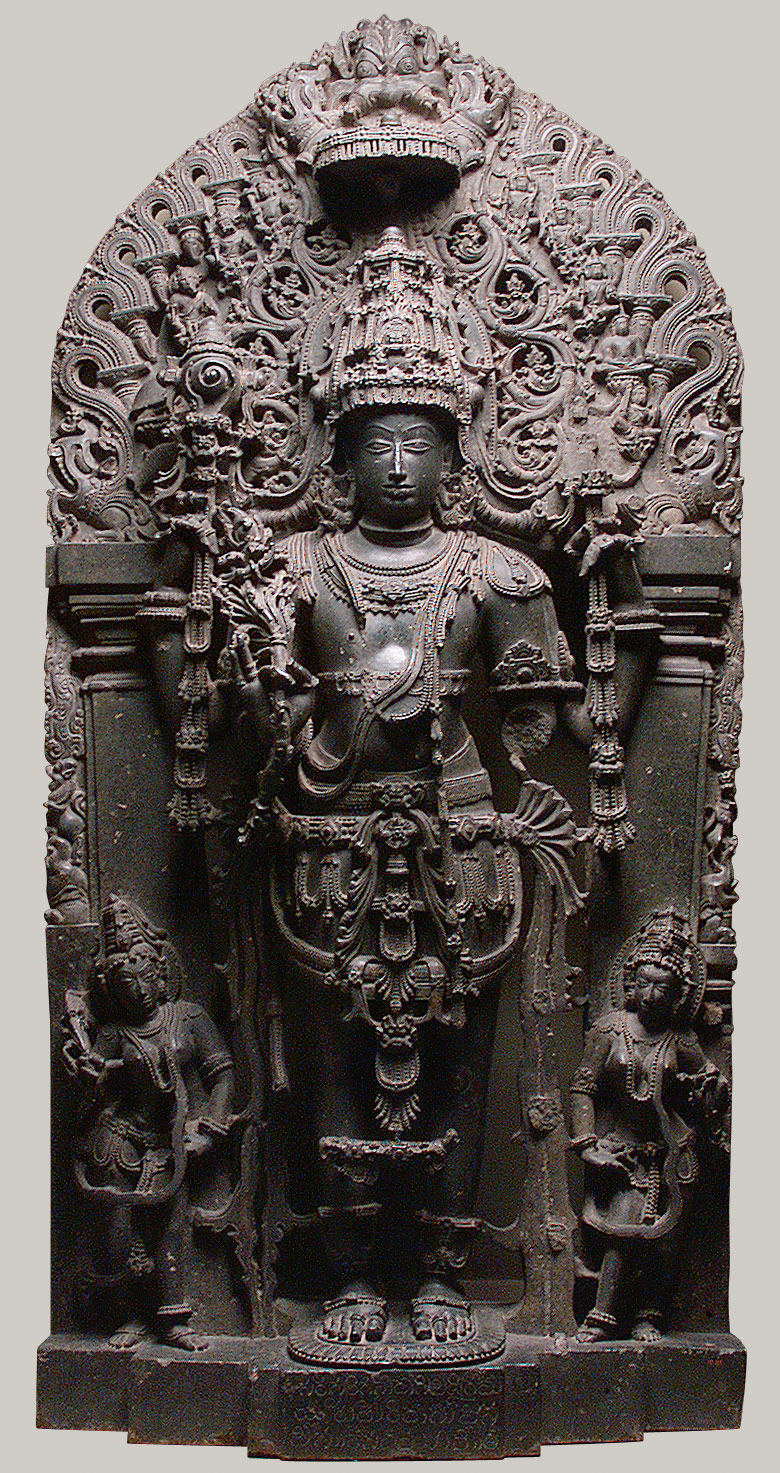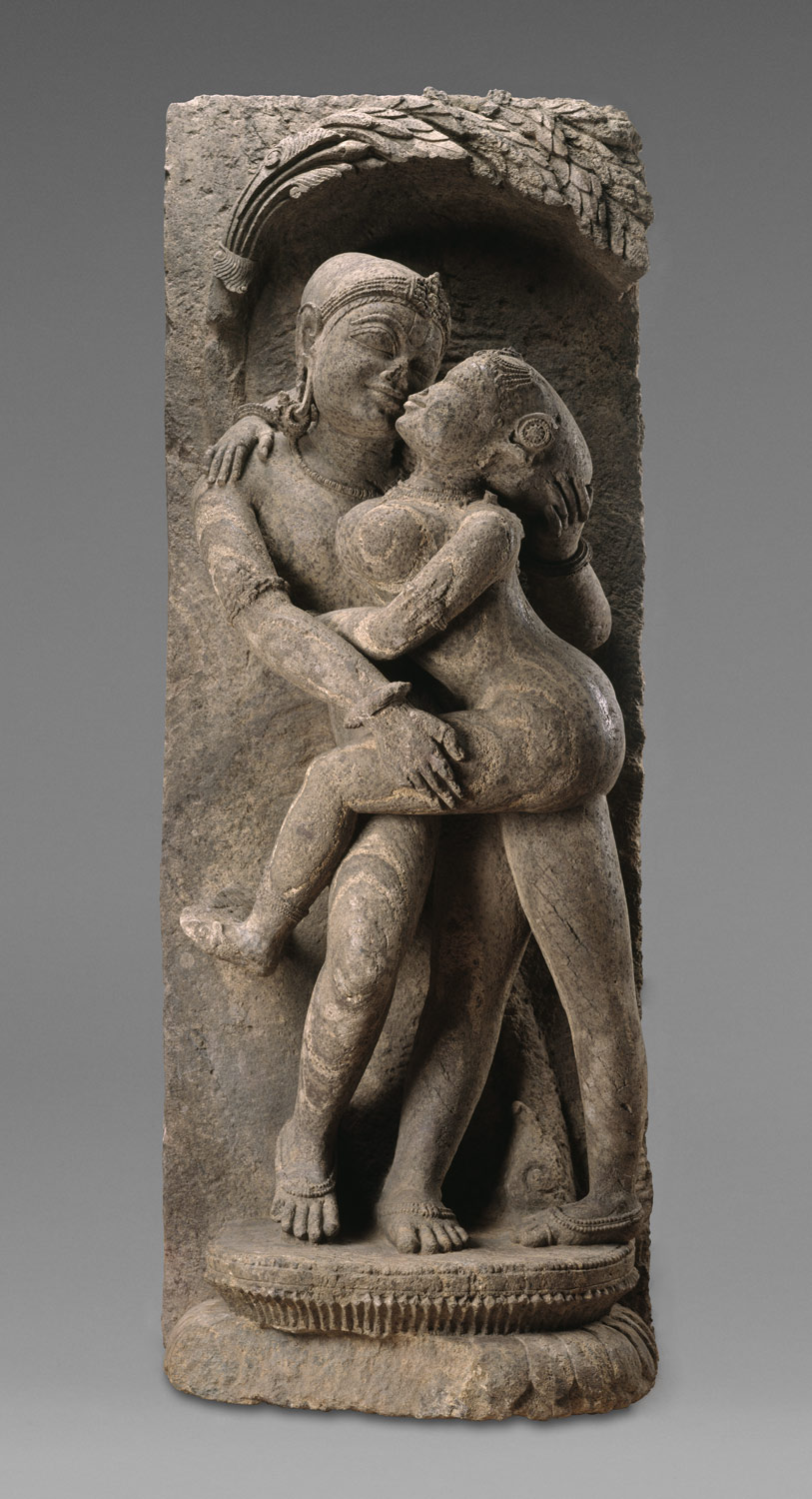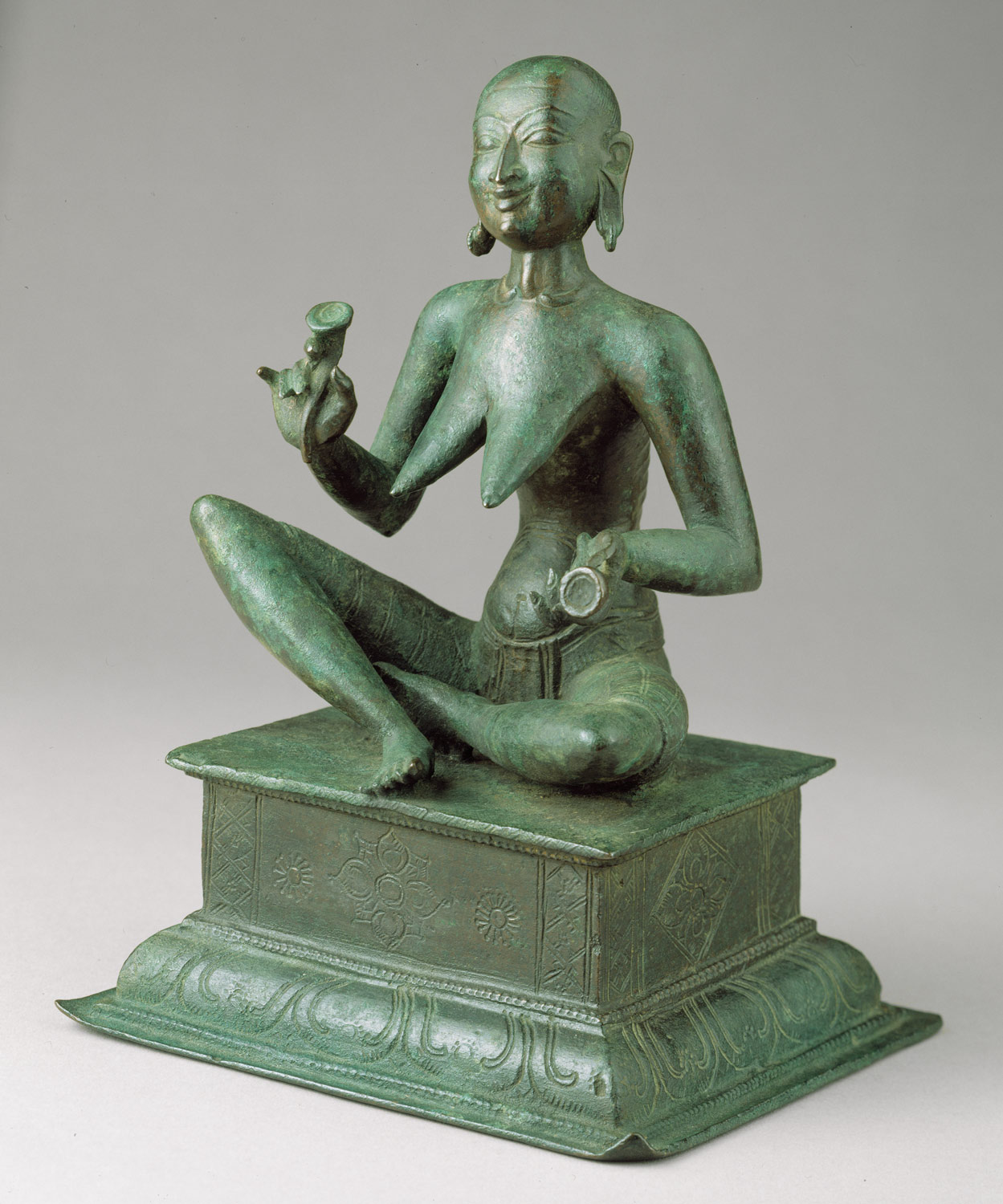Central India remains contested by various major powers—each developing a distinctive but related artistic style—until the ascendancy of Turkish–Central Asian dynasties at the end of the period. Buddhism, once a powerful religious and cultural force in the South, disappears in all but Sri Lanka, where it flourishes into the modern period. The Deccan is absorbed into the Muslim cultural sphere under the Delhi Sultanate, and then independent rulers. Vijayanagar remains independent, entering into complex alliances with the various Deccan powers until it is overcome by them in 1565.
South Asia: South, 1000–1400 A.D.
Timeline
1000 A.D.
1100 A.D.
CENTRAL AND DECCAN
SOUTH
SRI LANKA
1100 A.D.
1200 A.D.
CENTRAL AND DECCAN
SOUTH
SRI LANKA
1200 A.D.
1300 A.D.
CENTRAL AND DECCAN
SOUTH
SRI LANKA
1300 A.D.
1400 A.D.
CENTRAL AND DECCAN
SOUTH
SRI LANKA
Overview
Key Events
-
9th–13th century
The Cholas, historically known as early as the third century B.C., emerge as imperial contenders in the ninth century to dominate the south and remain prominent for around four centuries. Significant expansion to the north is blocked by Western Chalukya dominance of the Deccan, but the Cholas conquer Sri Lanka at the turn of the millennium and seriously weaken the Shrivijaya empire in Southeast Asia.
-
ca. 1000
The Brihadeshvara Temple is built in Thanjavur (Tanjore) by Chola ruler Rajaraja (“king of kings”). Significantly larger and more elaborate than previous temples, the Brihadeshvara paves the way for future elaborations and expansions of temple design. South Indian temples from this period onward grow into large complexes composed of various elements, including a main temple, gateways, and subsidiary structures (such as smaller shrines, water tanks, and halls).
-
ca. 1000–1300
Metal sculptures produced in the Chola kingdom are considered by art historians to be among the finest works of art in the world. Most images depict deities from the Shaiva and Vaishnava pantheons. Representations of Shiva as Nataraja, or “Lord of Dance,” are among the best known examples of the type.
-
ca. 1014–1044
The rule of Rajendra I (“the Great”), noted for its warfare and conquest, is considered one of the high periods of the Chola empire. In addition to defeating the Palas in Bengal, Rajendra undertakes a massive naval campaign against the kingdom of Shrivijaya (centered in Malaysia and Sumatra) in order to protect trade in China.
-
ca. 1017
The Cholas conquer Sri Lanka.
-
ca. 1030
An impressive Jain temple dedicated to Adinatha is completed at Mount Abu, northeast of Bombay. Jain temple building reaches a peak between 1000 and 1400; other major sites include Satrunjaya and Girnar.
-
ca. 1070
Vijayabahu I of Rohanna (r. 1070–1110) expels the Cholas from Sri Lanka, ending their fifty-year rule. He establishes a new capital at Polonnaruwa, launching 150 years of unity and prosperity. Buddhism flourishes in this period.
-
1100–1200
Ramanuja, the poet, philosopher, and patriarch of the Shrivaishnava tradition, propounds the philosophy of Vishishtadvaita, or qualified monism, and describes the theology of bhakti (devotion). He is credited with travels to the north of India and the introduction there of Shrivaishnavism.
-
1153–1186
A massive artificial lake, known as Parakrama Samudra, is built in Sri Lanka during the reign of Parakramabahu I. It is one of the greatest irrigation feats of the ancient world. His capital of Polonnaruwa is also spectacular.
-
ca. 1190
The southern part of the empire of the Later Chalukyas of Kalyani go to the Hoysalas (the other portions to the Yadavas and Kakatiyas). Hoysala temples are of two main types: a simpler style derived from Later Chalukya forms, and a second, more ornate style that is unique to the Hoysalas. The Keshava Temple in Karnataka, built by the Hoysala king Narasimha II in the mid-thirteenth century, is typically Deccan in style, integrating elements of northern and southern architectural styles.
-
ca. 1200
With the end of the Polonnaruwa period in Sri Lanka, several city-states emerge but none unifies the island. Muslim traders begin to settle in coastal enclaves.
-
ca. 1200–1300
The Culavamsa (Lesser Genealogy) is compiled in Sri Lanka. Attributed to the monk Dhammakitti with additions by others through the eighteenth century, it continues the earlier writings on the island’s history found in the sixth-century Mahavamsa (Great Genealogy).
-
ca. 1290
Marco Polo is believed to land in Tamil Nadu and sail up the Malabar Coast on his return from China; his published accounts of this journey are influential in Europe.
-
ca. 1300
A Tamil-speaking kingdom is established on the Jaffna Peninsula of Sri Lanka. This marks the beginning of a gradual linguistic division of the island between Tamil in the north and east and Sinhalese to the south and west.
-
ca. 1327
Muhammad ibn Tughluq of the Tughluq sultanate moves his capital to Deogiri in the Deccan, renaming it Daulatabad, in hopes of leading his troops to victory conquering the Deccan and further south. He is forced to return to Delhi quickly.
-
ca. 1343
In South India, the capital city of Vijayanagar is completed. One of the richest cities in the world at this time, it is noted for its palaces and enormous gateways. Built with a combination of dravida temple architecture and, for nonreligious buildings, a mixture of dravida and local Islamic styles, the city is built on a site associated with both Shiva and Vishnu. It is also linked to Rama, the avatar (incarnation) of Vishnu and hero of the ancient epic, the Ramayana. The Vijayanagar kingdom conquers the Hoysalas in 1346 and the Muslim sultanate of Madura (in Tamil Nadu) in 1370. Its most important ruler is Krishnadevaraya, a great patron of the arts and literature who is credited with building many major monuments and temples. The Vitthalaswami Temple at Vijayanagar, dedicated to a form of Vishnu, dates to his reign and represents one of the finest examples of Vijayanagar architecture.
-
1347
The Bahmanid dynasty in the Deccan is formed out of a revolt of Muslim nobles against Muhammad ibn Tughluq, ruler of the sultanate based in Delhi. A Deccani style of art emerges, born of the influence of formerly Delhi-based craftsmen brought to the Deccan by sultanate rulers and the foreign Muslim population of the Deccan, who encourage reference to Persian models. Dakhani, an early form of Urdu, develops as a literary language in succeeding centuries.
-
1371–1597
The kingdom of Kotte rules southwest Sri Lanka.
Citation
“South Asia–South, 1000–1400 A.D.” In Heilbrunn Timeline of Art History. New York: The Metropolitan Museum of Art, 2000–. http://www.metmuseum.org/toah/ht/?period=07®ion=sss (October 2001)
Related
Map
